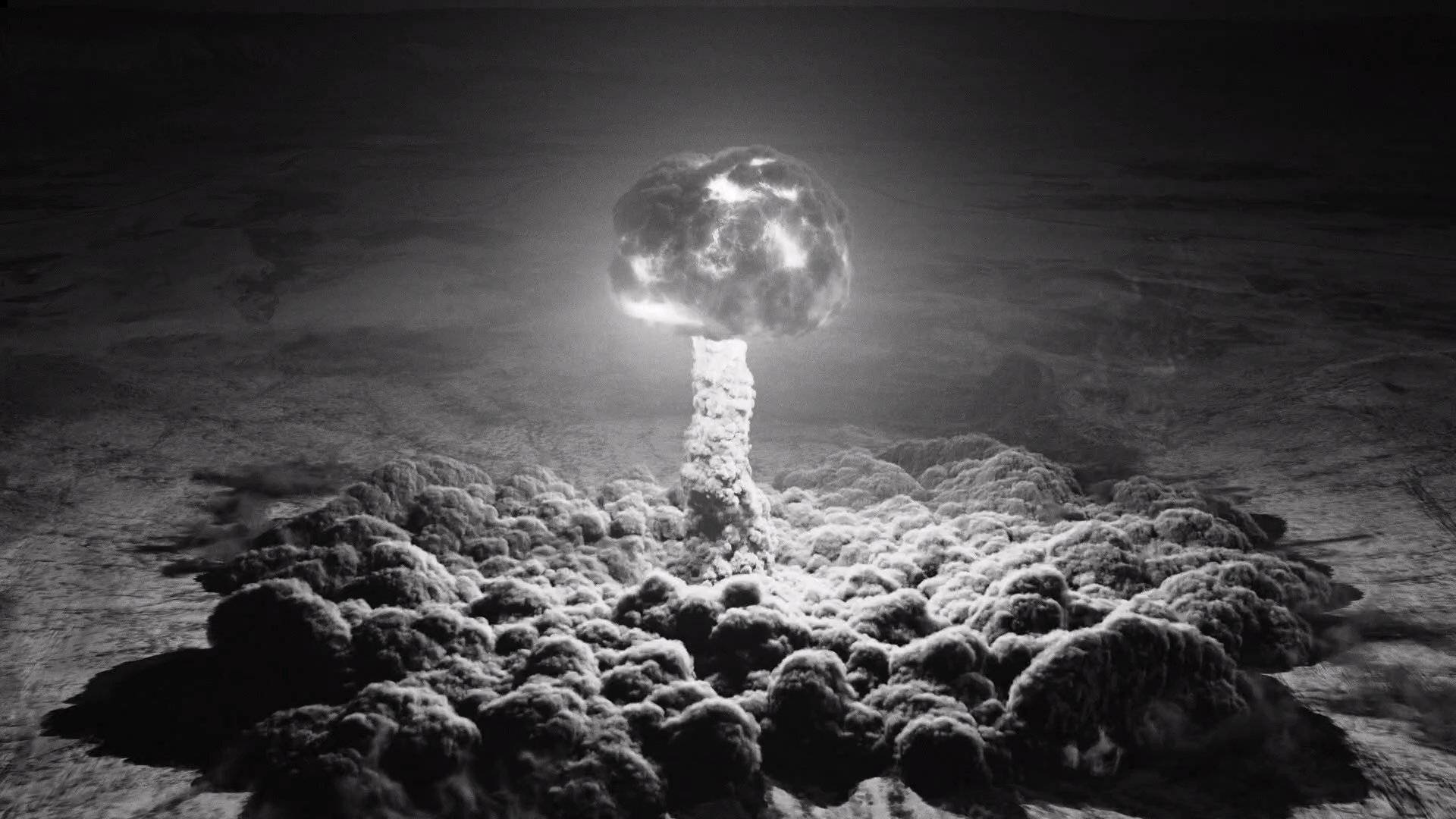With the third season of Twin Peaks coming to a spectacular, head-scratching close, we thought we’d look back at the journey that the show has taken us on, as well as its own awe-inspiring transformation from a simple yet compelling murder mystery, into realms beyond life and death, beyond space and time… that is to say, whatever it can be called now.
As someone who had, prior to this show, seen only a small handful of David Lynch’s films, I remember starting Twin Peaks having no idea what to expect–which I would later learn is exactly the way to enter anything with the name “Lynch” attached. The arguably legendary surrealist auteur seems to delight in taking your expectations and shoving them into the grinder that is his brilliant, impenetrable mind. The opening credits of the show is unique in itself, at least for its time: when Twin Peaks came out, it was something of a tradition for the opening credits of shows to begin with the kinds of credits that would introduce you to its main characters in a slideshow type of presentation still seen today, mostly in TV comedies. However, Twin Peaks begins dreamily, with Angelo Badalamenti’s iconic, wonderful score. And the show establishes itself immediately as something unique not only with its credits but with its storytelling and style.
There are times, even in just the opening pilot, when the show feels like a melodramatic sitcom; there are times when it shows glimmers of the kind of bizarre but infectious humor that carries on through all of its seasons; most important, at its start, it shows its capability to find its way under your skin and into your heart. It begins with the death of Laura Palmer, a high-school student who everyone knew and everyone loved, but no one truly knew and no one truly loved. Brought into the investigation to find out what happened to her and who killed her is FBI special agent Dale Cooper, a stalwart, noble, and somewhat eccentric man.
The first season of Twin Peaks is, for the most part, a straight murder mystery, an uncommonly compelling whodunit; the question “Who killed Laura Palmer?” hangs like a tainting shadow over the season, over every character in the show. And one of Lynch’s most prominent themes pervades the first season as well: that of women and the nature of their roles in society. By that, I mean that Laura Palmer meant something different to every person affected by her death. Mostly, however, she was a figure put on a pedestal, put into a role, and as we see in the prequel film, Fire Walk With Me, these roles that everyone imposes upon her are like traps closing in around her. And in many ways, she is punished by those around her when she deviates from these roles. The more that Cooper learns about her as a person and the events leading to her death, the more we see these roles and these images of Laura Palmer deconstructed.
And this is David Lynch, after all. Even in the first season, which is more straightforward than its subsequent season, there are elements of surrealism, of inexplicable horror, creeping underneath the many changing tones of the show. And this bursts forth increasingly until we come to the second season.
When in discussion with fans of Twin Peaks, the second season is often regarded as where the show goes downhill. I’ve even heard some say that they wish there had never been a second season; even David Lynch has expressed his outright disappointment and dislike of it. However, it is undeniably here to stay. If you ask me, however, the second season presents something of a conundrum. On one side, you have the studios having pressured David Lynch and Mark Frost into revealing the identity of Laura Palmer’s killer, which I won’t reveal here for the sake of spoilers. The first 9 episodes or so of Season 2 are thus brilliant; Twin Peaks is at its best, after all, when dealing with Laura Palmer. However, not long after this storyline is seemingly wrapped up, or at least treated as such, the show loses focus. It becomes too silly, follows relatively aimless story threads, before finally clinging onto a storyline that eventually brings it back to the story that matters most: that of the mythology of Twin Peaks, and the mysterious supernatural forces which also had a lot to do with the death of Laura Palmer. The second season starts off with some of the best television you will ever see, culminating in the conclusion of a storyline that is shocking, genuinely horrifying and disturbing, but deeply heartbreaking. Then the show loses focus enough that it drags the season’s quality down considerably.
And then David Lynch returns to the season, his presence having been noticeably absent for a large portion of it, and sticks the landing. The last couple of episodes of Season 2 are beautiful, emotional, hilarious not in a cheap way but in that uniquely Lynchian way, and also confounding. As I said above: this is David Lynch, after all. Without spoilers, all that can be said of the conclusion of Twin Peaks’s second season is that it leaves you with more questions than answers, and is both frustrating and uncommonly brilliant.
The way the show maneuvers itself across the first two seasons is unlike almost anything I’ve seen. More often than not, there is very little visual style to separate it from other shows of the time, other than, perhaps, a sense of efficiency. Its characters and atmosphere are what set it apart. But at times you can feel David Lynch take the reigns, and the show departs from any grounded sense of normality. The great writer David Foster Wallace once described the term “Lynchian,” defining it, essentially, as when the totally mundane combines with the macabre, only to reveal that the macabre, the darkness, has always existed within the mundane. In the second season, we are witness to a murder mystery going down the rabbit-hole, as Agent Dale Cooper–who I believe may be TV’s and cinema’s most memorable and wonderful protagonist–follows the question of “Who killed Laura Palmer?” beyond this world, beyond life and death, revealing the eternal struggle between the forces of good and the forces of evil behind our limited, mundane reality. And it is as awe-inspiring as it is terrifying. Only in the hands of such a show, of such creators as Mark Frost and David Lynch, could we go, over the course of mere scenes, from the tragic but progressing investigation into a woman’s brutal murder, to a timeless, menacing, mysterious place where a dwarf dressed in red dances and talks backward, where spirits inhabit human hosts, where one chants out between two worlds, ‘Fire Walk with Me.’ And only in Twin Peaks could you mention such characters as FBI Special Agent Dale Cooper, Sheriff Harry Truman, and the beloved Log Lady, in the same sentence as you could discuss characters such as The Little Man from Another Place, the Giant, or BOB.
But I digress.
We will reserve a discussion of Twin Peaks: The Return, for another post, coming soon. Suffice to say, Twin Peaks’s transformation from what seemed at first to be a much simpler murder mystery into something profoundly surreal and otherworldly, for lack of a better term, is a transformation that has taken us places we may never have expected, but which we enter with smiles on our faces–smiles and screams, of course, but smiles nonetheless.

